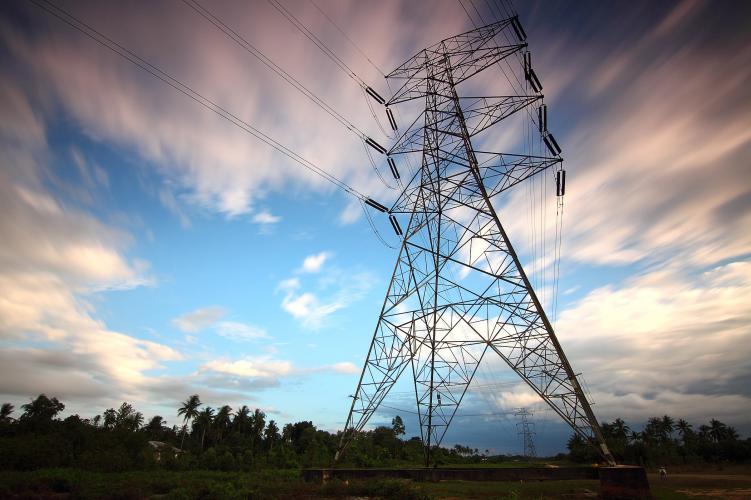
As more and more distributed resources come onto the grid, we are coming full circle back to something that looks more like Edison’s original distributed energy system, after a century of Samuel Insull’s centralized model. Besides changes in how energy is generated, the way it is used is also changing, with energy customers becoming active participants rather than just passive consumers. The interoperability of all of the devices on the grid is essential to keeping up with the changing needs of customers and energy markets.
The NIST Interoperability Framework
On September 27, the National Institute for Standards and Technology (NIST) and the National Association of Regulatory Utility Commissioners (NARUC) hosted the second of four regional workshops that will lead to v4.0 of the NIST Framework and Roadmap of Smart Grid Interoperability Standards. (link is to v.3.0) The NIST Framework provides a conceptual model for the modernization of the electric grid. It models how the different “domains” of the grid interact with each other – generation, transmission, distribution, operations, markets, service providers and customers. The focus of version 4 of the Framework is updating it to include distributed energy resources (DERs) including demand-side management (DSM) in the model.

Why Interoperability Matters
The workshop, held at the Indiana Utility Resource Commission in Indianapolis, opened with a welcome from Commissioner Sarah Freeman, who reminded the utilities, vendors, consultants, regulators and the sole advocate in the room (me) that “we are looking at the evolution of these systems around the world, that’s why we are here.”
In her keynote, Wanda Reder of Grid-X Partners discussed the changes in how we make energy, move energy and use energy and the ways in which modern innovation is driving those changes. The modern grid doesn’t end at the customer meter anymore – instead the end-users have to be integrated back into the energy system because of the DSM, customer-sited solar, behind-the-meter storage and other technologies that are transforming what it means to be an energy customer.
Most states in the country are at the ‘low penetration’ stage of DERs – there are a few here and there that have been integrated into the grid. The leading edge of states have more DERs, maybe 5% of peak load, which require levels of interoperability and planning that are pushing the boundaries of current models and breaking down technological ‘silos’. If we want to reach a high-DER case, with distribution-level energy markets, then we need the standards that allow and foster those interactions.
The first NIST Framework was published in 2010, and v3.0 was released in 2014. NIST’s Avi Gopstein described their perspective – technology and policy have driven changes to grid architecture that will impact utility operations, economics, cybersecurity and equipment testing & certification. There isn’t one correct architecture, so there has to be a framework that encompasses the universe of possible architectures and how the domains and layers within that universe communicate with one another.
Interoperability standards are there to ensure that the parties on either side of an interface have a “shared mutual understanding” of the data that is going over that interface, according to Dr. Lynne Kiesling of Purdue University. The enhanced communications from digital technologies reduce the transaction costs, enable mutually beneficial exchange and unlock value from the system that was previously unrecognized.
Kenya Stump of Kentucky’s Office of Energy Policy (a MEEA member) discussed the regulatory perspective on the benefits of interoperability. Besides the fundamental questions of any regulatory decision – is it used and useful, is it prudent, and does it increase safety and reliability of the service at reasonable rates – there are the questions of who benefits and who pays for it and whether those costs and benefits are equally distributed. To impact Kentucky’s energy system, there need to be monetizable, demonstratable value streams. At the most basic level, the value to the customer is whether it makes it easier for them to pay their bills and lowers the cost burden of doing so.
How Does Energy Efficiency Factor In?
Demand-side management, which includes both energy efficiency and demand response, is increasingly being seen by utility planning processes and by energy markets as one of the distributed energy resources. In the draft framework’s model of the customer domain, DSM resources are included as a source of energy that flows into the grid – they are sold into energy markets, dispatched by utilities, and more and more seen as an equivalent to energy supply. Once a DSM resource is in the market and it is a planned resource with contracted requirements, it is the same as supply and the grid interoperability framework treats it as such.
Get Involved
We tend to focus on our niche areas of the energy industry – vendors, utilities, consultants, advocates and researchers; supply-side and demand-side; centralized and distributed – so it is important that there are big-picture conceptual frameworks that remind us how all the pieces have to fit together and describe a set of standards that connects those pieces. The updates to the NIST Framework demonstrate that the demand side is playing a continued and expanding role in the modern electric grid Our participation in the collaboration process makes sure that efficiency continues to be recognized as a valuable energy resource as NIST refines their conceptual models for the Framework v4.0. In addition to the regional workshops that have already been held in Atlanta and Indianapolis, there are two more opportunities for stakeholder engagement on the NIST Framework:
- October 16 at the California Public Utilities Commission in San Francisco, California
- November 29 at the Rhode Island Public Utilities Commission in Warwick, Rhode Island